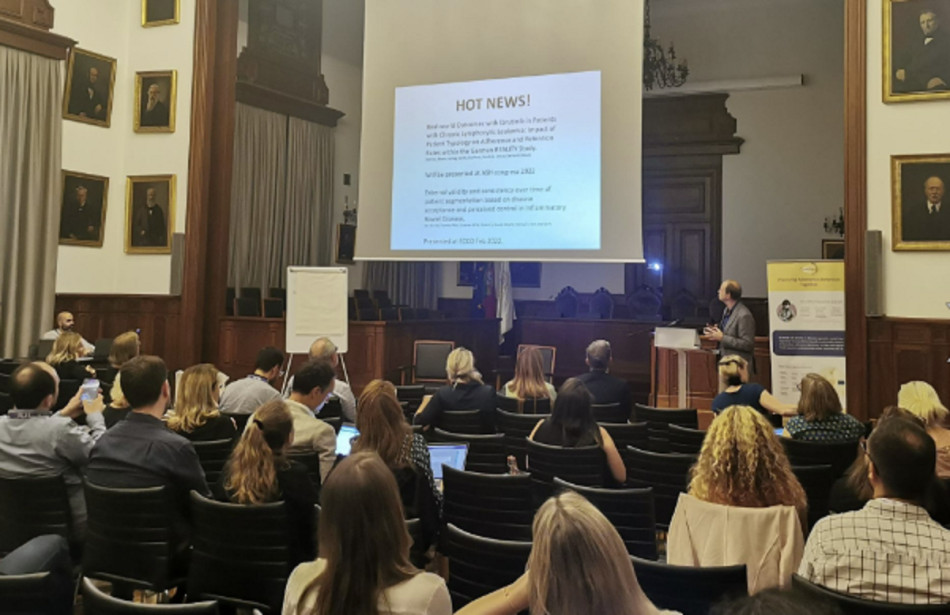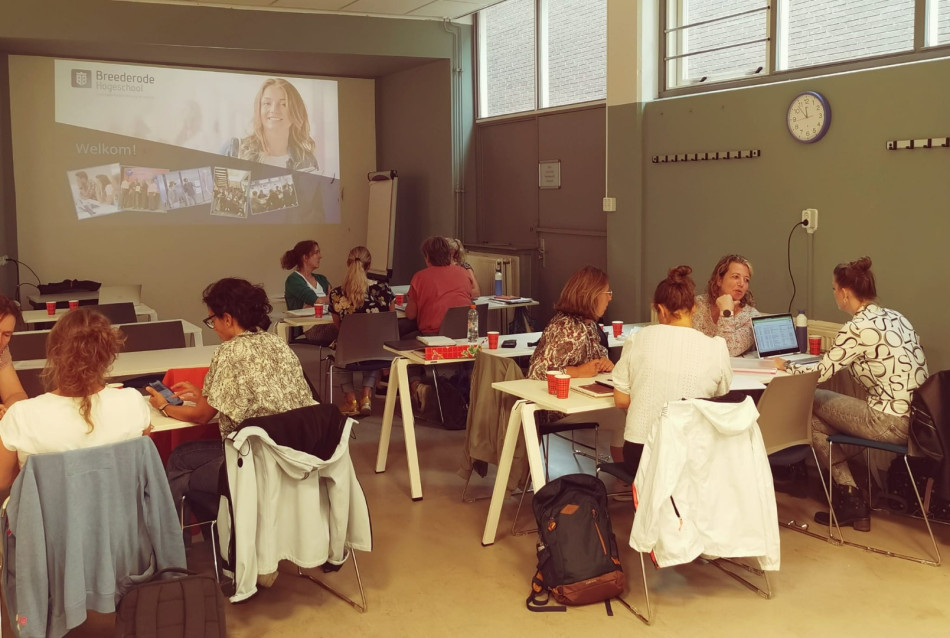Blog
How to Recruit Patients for Clinical Trials: A Comprehensive Guide
Simon Klaasen
722

05-02-2025 15:49
How to Recruit Patients for Clinical Trials: A Comprehensive Guide
Recruiting patients for clinical trials is a crucial aspect of clinical research, yet it remains one of the most significant challenges in the industry. A well-executed recruitment strategy ensures that studies are completed on time, improves data reliability, and ultimately accelerates the development of new treatments....Read more
Link2Trials Q&A_18
Aad Liefveld
1574

03-07-2024 12:12
In this Q&A series we answer questions we have received from our customer base.
#18: In what ways does patient feedback onpatientinformation documents contributeto the success of a clinical trial?
Patient feedback on study information documents, such as the informed consent form, is invaluable. It ensures these documents are accessible, understandable, and informative from the patient's...Read more
Link2Trials Q&A_17
Marjolein Nankman
1699

07-06-2024 15:34
In this Q&A series we answer questions we have received from our customer base.
#17: How does a patient feasibility assessment affect my study timelines?
While a patient feasibility study may add a few weeks to the study preparation timeline, it can significantly streamline the entire process in the long run. Conducting a patient feasibility study can streamline the clinical trial process...Read more
Link2Trials Q&A_16
Simon Klaasen
1355

23-04-2024 13:54
In this Q&A series we answer questions we have received from our customer base.
#16: Why should I include a patient feasibility assessment in my trial setup process?
Including a patient feasibility is crucial because it ensures the trial protocol and related documents are patient-centric. It helps identify and address potential issues from the participant's perspective, which can...Read more
Link2Trials Q&A_15
Aad Liefveld
1612

06-02-2024 11:47
In this Q&A series we answer questions we have received from our customer base.
#15: In what ways does patient feedback on patient information documents contribute to the success of a clinical trial?
Patient feedback on study information documents, such as the informed consent form, is invaluable. It ensures these documents are accessible, understandable, and informative from the...Read more
Link2Trials Q&A_14
Edwin Swart
1395

18-01-2024 17:04
In this Q&A series we answer questions we have received from our customer base.
#14: How does a patient feasibility study affect my study timelines?
While a patient feasibility study may add a few weeks to the study preparation timeline, it can significantly streamline the entire process in the long run. Conducting a patient feasibility study can streamline the clinical trial process by...Read more
Link2Trials Q&A_13
Marjolein Nankman
1213

10-01-2024 12:50
In this Q&A series we answer questions we have received from our customer base.
#13: What should the key aspects be of a patient feasibility study?
A comprehensive patient feasibility study should address the following key aspects:
Inclusion criteria assessment: Evaluate the relevance, clarity, and interpretation of the inclusion criteria to ensure they effectively identify eligible...Read more
Link2Trials Q&A_12
Simon Klaasen
1362

10-11-2023 11:34
In this Q&A series we answer questions we have received from our customer base.
#12: Why should I include a patient feasibility study in my trial setup process?
Including a patient feasibility study is crucial because it ensures the trial protocol and related documents are patient-centric. It helps identify and address potential issues from the participant's perspective, which can...Read more
Link2Trials Q&A_11
Marjolein Nankman
1395

13-09-2023 09:44
In this Q&A series we answer questions we have received from our customer base.
#11: What strategies can be implemented to improve patient adherence in clinical studies?
There are several strategies that researchers can use to influence these factors and improve patient adherence in clinical studies. Some of these strategies include:
Simplifying the study...Read more
Link2Trials Q&A_10
Aad Liefveld
1332

16-08-2023 15:43
In this Q&A series we answer questions we have received from our customer base.
#10: What are the common factors that affect patient adherence in clinical studies?
There are many factors that can affect patient adherence in clinical studies. Some of the most common factors include:
1️⃣ Complexity of the study protocol: Patients may find it difficult to adhere to a...Read more
Link2Trials Q&A_9
Marjolein Nankman
1356

27-07-2023 13:20
In this Q&A series we answer questions we have received from our customer base.
#9: Is patient behavior a factor in adherence and to what extent?
Patient behavior is a key factor in patient adherence to a clinical study protocol. Patients' behaviors, including their beliefs, attitudes, and habits, can influence whether they adhere to the study requirements or not.For example,...Read more
Link2Trials Q&A_8
Edwin Swart
1401

11-07-2023 20:05
In this Q&A series we answer questions we have received from our customer base.
#8: Is there a role of patient advocacy groups in online patient recruitment?
Patient advocacy groups play a crucial role in online patient recruitment by serving as intermediaries between patients and clinical trials. These groups often have a network of patients and advocacy organizations they can...Read more
Link2Trials Q&A_7
Simon Klaasen
1476

12-06-2023 12:53
In this Q&A series we answer questions we have received from our customer base.
#7: How to integrate online recruitment wit traditional methods for a comprehensive patient recruitment strategy
Integrating online recruitment with traditional methods for a comprehensive patient recruitment strategy involves the following steps:
Utilize social media platforms: Promote your clinical trial on...Read more
Link2Trials Q&A_6
Aad Liefveld
1436

24-05-2023 11:27
In this Q&A series we answer questions we have received from our customer base.
#6: Is there a role of patient advocacy groups in online patient recruitment?
Patient advocacy groups play a crucial role in online patient recruitment by serving as intermediaries between patients and clinical trials. These groups often have a network of patients and advocacy organizations they...Read more
Link2Trials Q&A_5
Simon Klaasen
1451

12-05-2023 14:28
In this Q&A series we answer questions we have received from our customer base.
#5: What is patient adherence in clinical trials, and why is it important?
Patient adherence refers to the degree to which a patient follows the instructions and requirements of a clinical study protocol. This can include taking medications as prescribed, attending study visits, completing study...Read more
Link2Trials Q&A_4
Marjolein Nankman
1347

12-05-2023 14:24
In this Q&A series we answer questions we have received from our customer base.
#4: How does social media advertising target the right patient demographic for your clinical trial?
To target the right patient demographic through social media advertising, you can follow these steps:
Define your target audience: Determine the age, gender, location, interests, and behaviors of your...Read more
Link2Trials Q&A_3
Edwin Swart
recruitment,data, patientrecruitment, socialmedia, advertisement, onlinerecruitment,clinicalresearch,onlinecampaigns
1561

12-05-2023 14:20
In this Q&A series we answer questions we have received from our customer base.
#3: How do you know what the best visuals are for your online clinical study advertisements?
What are the actual thumb stoppers? We let the patients decide.
In our creative brainstorming sessions, we develop many concepts that will work in a particular patient population. Then, we try these different...Read more
Interview Team members Beamer Project
Simon Klaasen
1520

14-04-2023 13:44
As part of their blog series “Lighting The Way”, the BEAMER project interviews team members to discuss one of the six dimensions of quality care—safety, effectiveness, patient-centeredness, timeliness, efficiency, and equity—related to treatment adherence.
For the second edition they spoke with Prof. Dr. João Filipe Raposo (Clinical Director of the patient...Read more
Link2Trials Q&A_2
Aad Liefveld
1583

09-03-2023 16:05
In this Q&A series we answer questions we have received from our customer base.
#2: How do we measure the effectiveness of online patient recruitment campaigns?
We measure the effectiveness of our online patient recruitment campaigns by:
Conversion rate: the percentage of visitors to a recruitment website who enroll in a study.
Cost per enrolment: the total cost of the campaign...Read more
Link2Trials Q&A_1
Simon Klaasen
1798

02-02-2023 19:46
In this Q&A series we answer questions we have received from our customer base.
#1: When you integrate online patient recruitment, don't you create a bias in your clinical trial?Yes, there is a potential for bias in clinical trials that use online patient recruitment methods. The patient population reached through online channels may not be representative of the overall patient population...Read more
Medication Non-Adherence in Rheumatology, Oncology and Cardiology: A Review of the Literature of Risk Factors and Potential Interventions
Aad Liefveld
1883

31-10-2022 13:32
Medication Non-Adherence in Rheumatology, Oncology and Cardiology: A Review of the Literature of Risk Factors and Potential Interventions
A very interesting read, shared by our BEAMER colleagues at Pfizer. It identifies not only risk factors for adherence in three disease areas, but also the potentially most effective interventions to improve adherence. The conclusions of this...Read more
Over a year of hard work from the BEAMER team and the first deliverables are a fact.
Simon Klaasen
1733

26-09-2022 13:27
Over a year of hard work from the BEAMER team and the first deliverables are a fact.
Aad Liefveld shared the deliverables for Work Package 1, where the team analyzed the available literature to establish a solid background on the behavioral model that will be used.
32 theoretical behavioral models have been identified and analyzed in different areas like actionability and patient...Read more
Breederode University of Applied Sciences Rotterdam provides a 1-year specific training course for research nurses
Marjolein Nankman
1532

08-09-2022 13:10
Again a very motivated group of Research Nurses becoming experts in their field. Simon Klaasen is happy to contribute with our knowledge of patient recruitment strategies. Breederode University of Applied Sciences Rotterdam provides a 1-year specific training course for research nurses/clinical trial coordinators to become experts in the field of setting up and supporting clinical...Read more
PSL (Patient Site Liaison) journey at Link2Trials
Stephanie Gontijo
1632

07-09-2022 12:57
My name is Stephanie Maria Gontijo dos Santos Lima and I want to share a bit about my journey in the last 4 years with Link2Trials.During the last years of my medical studies, I worked as a PSL for different clinical trials in different countries: from Spain, UK to USA and for studies recruiting people with conditions such as back pain, to diabetes or cancer. Working with recruiting...Read more
An interesting discussion about DCT
Aad Liefveld
1577

30-08-2022 12:49
An interesting discussion about DCT
An interesting discussion about DCT, started by Moe Alsumidaie.As a service provider we have supported a number of DCT’s. Some designs worked out fine for patients and sites, others not so much. From what we have seen so far, the successful ones were not technology or decentralization driven but made sensible choices about what could easily be...Read more
Choose category
Latest posts
- 05 February, 2025
- How to Recruit Patients for Clinical Trials: A Comprehensive Guide
- 03 July, 2024
- Link2Trials Q&A_18
- 07 June, 2024
- Link2Trials Q&A_17
- 23 April, 2024
- Link2Trials Q&A_16
- 06 February, 2024
- Link2Trials Q&A_15

 Argentina
Argentina Australia
Australia Balgarija
Balgarija België
België Canada
Canada Česko
Česko Chile
Chile China (中国)
China (中国) Colombia
Colombia Danmark
Danmark Deutschland
Deutschland England
England España
España France
France Ireland
Ireland Italiana
Italiana Lietuva
Lietuva Magyarország
Magyarország Nederland
Nederland New Zealand
New Zealand Österreich
Österreich Polska
Polska Schweiz
Schweiz Singapore
Singapore Slovenija
Slovenija Slovensko
Slovensko Suomi
Suomi Sverige
Sverige United States
United States Israel
Israel


